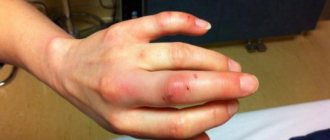In the last decade, along with an increase in the number of general poisonings, the level of alcohol poisoning, including wine, has been steadily growing. This is due not only to the growing popularity of alcohol, but also to the decline in the quality of alcoholic beverages. Before understanding the problems of wine poisoning, you should determine the composition and quality characteristics.
So, wine is an alcoholic drink made by fermenting grape must. Its composition, color and strength depend on the grape variety, type and type of yeast, aging period and other nuances.
In general terms, it contains:
- primarily alcohol (ethanol, ethyl alcohol, wine alcohol), the amount of which varies from 9-20%,
- methyl alcohol and other higher alcohols up to 1.1 g/liter,
- glycerin 14-30 gr. per 100 grams of alcohol,
- carbohydrates represented by polysaccharides, glucose, fructose, etc.,
- organic acids, for example, tartaric, volatile, malic, lactic amino acids, including peptides, proteins and ammonia,
- phenols (0.1 – 5 g/l), aldehydes, esters, acetates and other substances that play a role in the formation of taste, color and smell of wine,
- minerals and vitamins.
Is it possible to get poisoned from homemade wine?
In principle, classic noble wine, when the technology of preparation and hermetically stored in a wooden or glass container is followed, cannot be poisoned, even if it is many years old. Such wine has no expiration date, and you can only get poisoned by drinking it excessively , when the alcohol has done its job.
But you can be poisoned by artificial wines or wine drinks that contain various additives if their expiration date has passed. Typically, such wine is marked on the bottle as “special”, and the maximum date for possible consumption is indicated.
The most common poisonings are homemade wine and mash when the technology is broken. Such drinks are always made from natural raw materials - fruits, berries and sugar, but poisoning occurs due to the entry and reproduction of pathogenic microbes that release toxins . In addition, wines made from fruits with seeds accumulate a deadly poison - hydrocyanic acid.
The danger is posed by cheap surrogate wines, popularly called “bormotukha,” and counterfeit wines, which are made from powder with the addition of alcohol, often methyl, butyl or isopropyl. Such poisonings can be quite severe.
How to spot a fake
To preserve your own health and the health of your loved ones, experts recommend learning a number of simple tips that will help you recognize counterfeit products.
Sommeliers who are well versed in the types of wine, as well as their authenticity, can recognize a fake in a couple of seconds. But ordinary citizens cannot achieve this level of skill. However, there are several easier ways to recognize a possible counterfeit. Experts recommend paying great attention to:
- Price. By default, a drink from a famous manufacturer cannot be cheap, even if it is a promotional offer.
- Label. Honest manufacturers always mark the bottling date in printed font, and not with regular ink.
- Cork. It should tightly close the neck and enter the bottle equally evenly from all sides.
If you received a suspicious wine as a gift, it is recommended to open it to inhale the aroma. If it has harsh notes or chemical impurities, then it is better to refuse to drink the contents of the bottle. A negative answer should also be given to the question: is it possible to drink expired wine? A good drink, which was produced according to all the rules, is distinguished by its characteristic astringency and does not have any unnecessary flavors.
Symptoms of poisoning
Characteristic signs of wine poisoning are:
- nausea, vomiting;
- headache, dizziness;
- stomach ache;
- frequent loose stools;
- increased body temperature;
- severe general weakness.
These are just general symptoms of intoxication; they depend on which component of the wine caused the poisoning. For example, industrial alcohol in its composition leads to severe intoxication, disorientation, visual impairment, and convulsions. Hydrocyanic acid, often found in household products, causes redness of the skin and mucous membranes, respiratory problems, nervous system problems, and the development of seizures.
Taking benign wine in excess amounts is manifested by symptoms of ethanol poisoning : loss of orientation and balance, inappropriate behavior, decreased reflexes and muscle tone; in severe cases, convulsions and coma develop.
Main signs of wine intoxication
First, you should understand the distinctive features of poisoning with homemade tinctures, the creators of which ignored the rule of avoiding fruits with seeds.
There are two main degrees of intoxication in such a course of poisoning:
- fast,
- heavy.
In the first case, the poisoned person almost instantly loses consciousness. He is tormented by convulsions. If help is not provided immediately, death occurs very quickly. In some cases, just fifteen minutes is enough.
In the second case, the symptoms do not appear so quickly, but death occurs quickly. Before losing consciousness, the patient usually experiences increased arousal.
To help the victim, you need to understand as early as possible why he became suddenly ill. The most notable feature in this case is the characteristic almond flavor. After this, the patient begins to experience:
- sore throat;
- numbness in the mouth;
- metallic taste;
- pain in the chest area;
- feeling of lack of air;
- headache;
- dizziness;
- noise in ears.
Toxins first begin to affect the nervous system. That is why the influence will immediately spread to the respiratory center. The patient experiences shortness of breath and problems with normal breathing rhythm.
In addition, a parallel development of depression of the cardiovascular system occurs. This leads to a sharp decrease in blood pressure followed by bradycardia. The man loses consciousness.
In an unconscious state, the patient is often plagued by convulsions. In this case, they can be divided into several attacks, varying in time. During short periods of calm, the patient rarely regains consciousness, and his pulse slows down. At the same time, the pupils dilate and do not react to light.
The final stage is considered to be a deep coma. Since a person does not react reflexively to all stimuli, he defecates and urinates involuntarily. If you wait until this phase without first calling an ambulance, then the chances are extremely high that the poisoned person will die.
If assistance was provided urgently and professionally even at the mildest stage of the disease, then a complete recovery can be expected in approximately three days. The patient will need about a week for the recovery period in case of moderate poisoning.
Prompt assistance to the victim
If you have a bottle of wine lying around at home, inherited from your grandfather, then you should not wonder whether it is possible to drink fermented wine. It is better to immediately throw away the spoiled product.
But even refusing a fermented drink does not always save you from acute poisoning associated with other causes. If a person has all the clear signs of wine intoxication, you need to follow simple instructions aimed at saving the life of the victim:
- Call an ambulance.
- If a person is unconscious, he needs to be laid on a flat surface and a pillow or folded clothes placed under his head. The head should be turned to the side. This will prevent the tongue from accidentally sticking in.
- If breathing and pulse cannot be traced, then emergency resuscitation measures should be taken.
If poisoning has occurred due to cyanide and the person providing assistance is one hundred percent sure of this, then the patient needs to be given an antidote. In everyday life it can be ordinary sugar. At the same time, you should not give granulated sugar for chewing. It is much more effective to dilute it in water, making the most concentrated solution.
Source: medtox.net
First aid and treatment
If the patient’s general condition is satisfactory, you need to immediately rinse the stomach with a weak pink solution of potassium permanganate - give 0.5 liters to drink and immediately induce vomiting, rinse until clear water. Then you need to give an enterosorbent (activated carbon, polysorb, smecta, porlifepan and others), a saline laxative (magnesia).
Next, you need to carry out rehydration - flooding the body with liquid, at the rate of 1 liter every hour. It is better to give special pharmacy rehydrating solutions containing minerals and glucose - glucosolan, rehydron. You can alternate them with freshly brewed sweet tea, still mineral water. A decoction of rice, potatoes, and flaxseed is also suitable. If the condition improves and vomiting stops, you need to continue taking sorbents and fluids, and visit a doctor the next day.
In cases where the condition is serious, the patient is inadequate or there is no consciousness , you need to call an ambulance, lay him on his side, ensure rest and fresh air. If you lose consciousness, you can hold a cotton swab soaked in ammonia to your nose for 2-3 seconds. You need to monitor your breathing, pulse and blood pressure until the ambulance arrives.
Treatment in a hospital consists of detoxification, administration of an antidote (if there is one, depending on the nature of the poisoning), infusion therapy, and restoration of impaired body functions.
In what cases does oxidation occur?
Acetic acid bacteria are part of fermented wine must, but they do not always lead to sourness of the drink. There are several types of such bacteria: acetobacter aceti, acetobacter xylinum, acetobacter kutzingia, acetobacter pasteurianum. Acetobacter aceti usually plays the main role in acetic souring. Acetic bacteria, which cause wine to become sour, develop for several reasons.
- High temperatures, above 36°, and a constant flow of oxygen have a beneficial effect on the development of these harmful bacteria. They actively multiply and break down molecules of wine alcohol into ordinary water and acetic acid.
- The vinegar midge, which actively reproduces during the winemaking period, is a carrier of acetic acid bacterial spores. The fly carries germs of bacteria, leaving large clutches of eggs in the cracks of vats, tongues, barrels and rubble. The best remedy for insects is fumigation of premises with sulfur.
- Bacteria and wine yeast are found on the grapes and from there they enter the must. Sick and damaged berries, grape pulp and pomace that remain in the press, slowing down fermentation - all this creates a favorable environment for souring to develop.
- A high degree of contamination is created in vats with an open floating cap.
- Free space in barrels that are not filled to the top is great for the development of bacteria and increases the risk that the wine will go sour.
- Violation of sanitary and hygienic conditions and the use of dirty containers are a common cause of alcohol souring.
Souring occurs quite quickly, within three to five days. When the alcohol content is less than 2%, bacteria cease to function. Such processes can occur both during the production of homemade wines and during industrial production.
Is it possible to drink expired wine?
The shelf life of wines varies, the shortest is for sparkling varieties (punch, champagne), white and rose wines can be stored for 2-5 years, and red collection wines for up to 20 years. However, most often, inexpensive bottled wines are purchased, which are stored for 1-2 years. This does not mean that after this time the wine has become expired and toxic . If it is natural and stored in a dark, cool, ventilated place at a temperature of +10-14°, then there is no need to worry. The main thing is that when opening the bottle there should be no gas bubbles or unusual odor.
Is a water seal necessary?
The use of a water seal at the first stage is required to ensure that carbon dioxide bubbles leave the workpiece, while oxygen does not enter. Without this part, the container would quickly burst due to excessive pressure. It is not necessary to use a special device bought in a store: a simple rubber glove with a hole in one of the fingers works well. At the last stage, when carbon dioxide almost ceases to be released, the number of bubbles rising from the liquid is greatly reduced. The glove falls off and can be removed.
Is it possible to drink fermented wine?
On the doctor’s recommendation, you pour yourself a glass of wine, but what to do with the remaining 500-550 ml - can you drink it in the following days? The fact is that the unfinished wine remaining in an open bottle, whether you like it or not, after contact with air begins to ferment and oxidize.
The problem is not that such wine loses its taste, but the danger of poisoning. Fermentation bacteria and fungi can cause damage to the digestive tract, and a high concentration of acetic and tartaric acids can cause intoxication.
You should not follow the advice of “experienced” people to try to improve the health of wine - sterilize it or add yeast for new fermentation, or use it in cooking. Fermented wine should be thrown away without regret. And in order for it to last longer, the opened bottle must be tightly capped and placed vertically in the refrigerator.
Dry white and pink wines stored in this manner are suitable for 1-2 days, red wines for up to 5 days, table and fortified wines for 7-8 days. We are talking about natural wines; artificial and sparkling wines cannot be stored after opening.
Shelf life of young wine, what happens after it expires
The lifespan of wine has several stages. As for his youth, winemakers have their own opinions. Some people consider the drink to be young only a few days after vigorous fermentation has passed. Others define this period as several months before the start of the new calendar year. Still others call wine not poured into barrels for storage young.
Young homemade wine requires special attention. So how exactly at this ?age? it is susceptible to diseases that are better prevented rather than cured.
As soon as the wine has fermented, it should be immediately removed from the sediment. This must be done so that it does not acquire an unpleasant bitter taste. Transfusions must be done repeatedly. Thus, the drink is clarified, freed from suspensions and “ventilated”.
Fermented homemade wine is poured into a bottle or bottles for further storage. It is important that their volume is completely filled and the bottles are tightly closed with corks. The less space there is for oxygen, the better, since its presence can lead to acetic fermentation and other diseases. You need to take care of the containers in advance. If it happens that there is not enough drink to fill up the neck, then adding water is allowed. But this can only be done with strong wines.
If the acidity is high, then initially it should be stored in a room with a temperature of 14 to 18? C; if the acidity is low, the first week should be kept at a temperature of 2 to 6? C. The ideal storage temperature is 13? C.
Consequences of alcohol poisoning
Severe acute or systematic chronic alcohol poisoning due to excessive consumption of wine inevitably leads to the development of irreversible health consequences in which all systems and organs suffer:
- Cardiovascular system – development of atherosclerosis, hypertension, coronary disease, risk of myocardial infarction.
- Nervous system – cerebrovascular accident, risk of stroke, coma, development of polyneuropathy, decreased mental abilities, personality degradation.
- Digestive system – fatty liver, cirrhosis, pancreatitis, gastritis, duodenitis, peptic ulcer, tumors.
- Genitourinary system – renal failure, decreased sexual function, fertility.
- Endocrine system – diabetes mellitus, hypothyroidism, hypogenitalism (decreased production of sex hormones).
- Hematopoietic system - anemia, increased blood clotting, development of thrombosis.
- Immune system – decreased production of antibodies, high susceptibility to various infections.
Victor Systemov - expert of the 1Travmpunkt site
Nikifor Averin, sommelier of the BOK restaurant:
Yes, you can get poisoned from wine. But there are two types of “bad” wine: counterfeit and wine that has fermented due to natural reasons. For example, in Italy in 1986, a large batch of wine was discovered that contained methanol. Unfortunately, this alcohol has neither aroma nor taste, so there have been several cases of wine being sent with this batch. Fermented wine has a characteristic vinegary aroma and taste, it is immediately felt, and a person simply cannot drink such wine, and therefore is unlikely to be poisoned.
Filippovich Dmitry, sommelier at Community restaurant:
It is very easy to get poisoned with wine and this happens, most often, in two cases. The first case is that the wine is simply of poor quality. You can insure against this by buying a drink only in trusted places or by observing your own control - inspecting the bottle, the integrity of the cork and the originality of the label.
The second case is more “trendy”. Nowadays biodynamics is very popular, which some people’s bodies perceive very poorly - the symptoms, in fact, are close to poisoning. The reason is that biodynamic wines are most often unfiltered and, by definition, no preservatives are added to such wines. Due to this, the wines are “alive”, and the result is often unpredictable. Biodynamics is very interesting (and tasty!), but people with weak digestive systems should be careful with it.
Vitaly Ekimenko, Moregrill restaurant:
Wine is a fermentation product, a living product. The wine is not strong in strength, which means it can be a carrier of the fungus. When consuming, there are a number of rules that are best followed to avoid poisoning.
The first and most dangerous is a wine defect, popularly called a “cork.” Typically, the wine smells like mold, wet cardboard, and an earthy tone, which can be detected both when inhaling the aroma and when swallowing the wine. This is why you might have noticed that sommeliers in restaurants sniff the cork when opening a wine. The defect is offensive and, unfortunately, irreparable. It is better not to drink this wine, but to return it to the store.
Tip #1. Glasses
Before all the serious information that follows, we immediately warn you - you can drink wine from absolutely any glassware that you like. Glasses, mugs, glasses, shot glasses, even straight from the bottle. But, since our article is about the correct use of wine, we’ll still figure it out.
For white wine, it is recommended to choose smaller glasses than for red, and it must be drunk chilled. So, smaller glasses allow you to:
- preserve floral aroma;
- maintain low temperature;
- express more acidity in wine;
- release more flavors (even at low temperatures) thanks to its proximity to the nose.
Famous sommeliers have found that it is possible to achieve the most pleasant taste of red wine . It is correct to drink wine from long-stemmed glasses with a wide neck (due to the characteristic bitterness and spiciness in the taste of the drink). It is also best served at room temperature. These conditions provide:
- sensation of numerous combinations of red wine aromas;
- rapid evaporation of ethanol (for example, due to a wide surface);
- softer and more balanced taste.
The benefits of wine
An aromatic, tasty drink made from grapes, if prepared according to the rules, is a storehouse of useful vitamins and microelements. But this does not mean that it is useful to drink wine every day without observing the measure. This is a direct road to alcohol addiction.
With moderate consumption of wine, it can have a beneficial effect on internal organ systems:
- regulates hormone levels, thereby providing an anti-cancer effect;
- reduces cholesterol levels;
- has a detrimental effect on pathogenic microflora;
- improves the functioning of the heart and blood vessels, prevents the development of many diseases;
- improves vascular tone, strengthens capillaries;
- accelerates the digestion of heavy foods, improving the functioning of the gastrointestinal tract;
- accelerates the elimination of ethanedioic acid, preventing the development of urolithiasis;
- regulates blood sugar levels;
- breaks down fat cells, preventing excess weight gain;
- wine during menstruation, but no more than a glass, helps relieve tension, reduce pain and discomfort;
- the drink stimulates the functioning of the endocrine system;
- starts metabolic processes;
- Helps reduce the negative impact of stress and avoid depression.
Looking at the list of beneficial properties, we can conclude that you can drink wine every day in minimal quantities.
Let's go to white
What do you drink white wine with? Snacks for different varieties, like the drinks themselves, differ from each other in aroma and different flavor shades.
- Chardonnay, perhaps, remains on the first step of the imaginary pedestal in terms of worldwide popularity. This drink is made in many countries from the grapes of the same name. It has a delicate and light aroma and a pleasant softness of taste. It can smell like apples, peaches, and other fruits, and have flavors like nuts or butter. And this is just the edging of our own and authentic bouquet, which arises during the processes of fermentation and distillation. What do you drink Chardonnay wine with? Its enveloping and sweetish taste goes well with seafood, fish dishes, chicken, and pork. The drink goes well with grilled salmon and dorado. Sweet fruits and creamy cheeses are all great additions to Chardonnay.
Harm of wine
Many people do not suspect what will happen if they drink wine every day in unlimited quantities. The first answer is alcoholism. Indeed, addiction develops quite quickly and in the future it will take a lot of effort to get rid of it.
When considering the question of how much drink you can drink per day, experts call the amount no more than 100-150 ml. Exceeding the established norm will result in harm to the body. The product contains ethyl alcohol, which not only provokes the development of addiction, but also has a destructive effect on internal systems and organs:
- liver tissue is affected, cirrhosis and necrosis develop. The organ may completely stop functioning;
- the risk of stroke and myocardial infarction increases;
- against the background of alcoholism, malignant tumors often develop;
- Brain cells are destroyed, as a result, dementia develops, and the person degrades.
Drinking wine if you have epilepsy is strictly prohibited. Alcohol can trigger another attack. It often ends in death. The ban applies to those who are interested in whether it is possible to drink wine if they have hepatitis. The disease itself destroys the liver, and in tandem with alcohol this will happen much faster.
Wine for gout provokes an exacerbation of the disease. Experts urge those diagnosed with this disease to completely avoid this product. Even 100 ml of wine, which is harmless for a healthy person, can negatively affect health if gout is detected. In the condition of stable remission, it is allowed to drink no more than 50 ml of wine once every few months.
Snacks for dry red
Not everyone likes this wine. This is due to its tart and sour taste and rather low strength. By the way, such a nuance can be brightened up with just the right dishes. What to drink dry red wine with?
- First of all, it's cheese. When choosing, you should know: the drier the drink, the more mature the fermented milk product should be. Accordingly, dry red is not recommended for soft and young cheeses. The product should be mature and slightly sweet. Cut the cheese into small slices or prepare a special appetizer on skewers.
- Secondly, meat. Baked pork with bacon and ham is best. You can serve a mix of pieces of different types of meat. The thick flavor of the meat makes it possible to brighten up the acidity and astringency of the wine.
- And, of course, fruit. But some experts (not without reason, by the way) believe that the sour gifts of gardens do not go well with such alcohol. Therefore, in order to eliminate the sourness of drinks, sweet fruits are selected for them: oranges and mangoes with peaches.
Is it possible to drink fermented wine?
If, after opening the bottle, there is any product left inside, do not consume it if traces of fermentation are already visible. Taste qualities are lost and fungal infections develop. They can affect the digestive tract. A high content of acetic and tartaric acid causes poisoning.
Some people advise adding yeast to the fermented product and sending it to be sterilized. This cannot be done, just like adding fermented drink to dishes during cooking. To prevent fermentation, the bottle should be carefully closed after opening and stored in the refrigerator in an upright position.
- Dry white and rose wine can be stored for 24-48 hours.
- Red 5 days.
- Table and fortified drinks up to 8 days.
Fizzy and artificial drinks cannot be stored; this must be taken into account.
Features of sweets
It is better to eat red varieties of sweets with food rich in protein. First of all, this alcoholic drink should be consumed with meat (red: beef, veal, lamb). It can be spicy, salty, even spicy. Sweets are also combined with so-called red fish (salmon, trout and tuna). Seafood is served here quite rarely. Pairs perfectly with dessert. When choosing dishes and snacks, you should remember: the sweeter the drink, the more neutral the dessert dish is in taste.
Related article: Star Kara - grapes
Cleaning
Cleaning homemade wine is not limited to removing the sediment. If it remains cloudy during storage, you need to filter the wine at home. Let's consider popular methods:
- Purifying wine with gelatin is effective and simple: for 20 liters, take 5 g of gelatin. Dilute according to the instructions on the package and add to the wine while warm. In a couple of weeks you will see that all the dregs have collected in flakes;
- wines are purified with bentonite - white clay: the clay is crushed, diluted with water, added, mixed and left alone for a week. For 20 liters of wine - 60 g of bentonite and 600 ml of water.
We have come across incorrect information on the Internet that bentonite turns into lime. It doesn't transform! Clay and lime are different things, do not confuse them! Concrete is clay, and lime is a substance obtained by firing a stone called limestone.
- Cleaning wine materials works well with the help of milk: for cleansing, take 1 teaspoon of low-fat milk per 1 liter of wine. Leave in the room until the flakes settle (3 – 4 days).
For final clarification, use a cardboard filter or drain it from the sediment. The filtered wine is bottled again, corked and stored in cool conditions.
These methods can be used to purify homemade wine. These methods do not affect the strength and taste. But if the aged wine has an unpleasant aroma and taste, it is better to use charcoal (pharmaceutical activated charcoal is ineffective in this case).
Early addition of yeast after sulfites
Before introducing yeast into wine, it is preferable to treat it with sulfites (sodium bisulfite, Campden tablets, SO2 sulfur):
- Sulfites disinfect and destroy foreign microbes.
- Sulfur dissolves in the atmosphere and comes out of the juice as a gas.
Optimal temperature for quiet fermentation
To get a tasty drink, it is important to observe the temperature regime: if the room where the wine ferments becomes too cold, the process may stop. Too hot rooms are also dangerous: at +30°C, yeast fungi die, which also leads to the cessation of the process. Do not place containers with wort in places where sudden temperature changes are possible; Experts recommend placing future wine in places where the temperature remains stable. The best range is +15°С…+ 20°С, minor fluctuations are allowed.
Quiet fermentation of wine is the third stage of preparing an alcoholic drink. It is important to properly care for alcohol during this period, not to let the process take its course, since if technology is not followed at home, alcohol can easily be spoiled.
To get a tasty drink, it is important to observe the temperature regime: if the room where the wine ferments becomes too cold, the process may stop. Too hot rooms are also dangerous: at +30°C, yeast fungi die, which also leads to the cessation of the process. Do not place containers with wort in places where sudden temperature changes are possible; Experts recommend placing future wine in places where the temperature remains stable. The best range is +15°С…+ 20°С, minor fluctuations are allowed.
What is the difference between vigorous fermentation and quiet fermentation?
Quiet and vigorous fermentation differ in the intensity of the process and duration. In addition, each of them has some features that are not characteristic of the other. Violent and quiet fermentation are stages of the overall process.
The stage of vigorous fermentation is the first. At this time, a large volume of carbon dioxide is released; There is a lot of sugar and yeast in the mass. Sometimes the amount is so large that the liquid may seem to boil. Up to 2-3 bubbles come out of the shutter within a second, which can cause loud sounds and hissing. The stage lasts for 2-3 weeks. Then the intensity of the reaction gradually decreases.
At the third stage, carbon dioxide almost ceases to be released: the yeast almost stopped reacting, fell to the bottom of the container, the liquid became lighter, almost no sugar remained (it was converted into ethyl alcohol). The alcohol is almost ready. It is important to complete the process correctly. It will take more time than vigorous fermentation: quiet fermentation can last for several months. At this stage, the taste of the drink is formed. The process proceeds silently.
Do you use expired food for cooking at home?
Yes, the main thing is to process it if it is meat or expired kefir for pancakes.
33.57%
No, it is very dangerous and not useful.
27.14%
If the products have fungus or mold, then we throw them away; if they are a couple of days past their expiration date, we use them for food, even without heat or other treatment.
39.29%
Voted: 140











